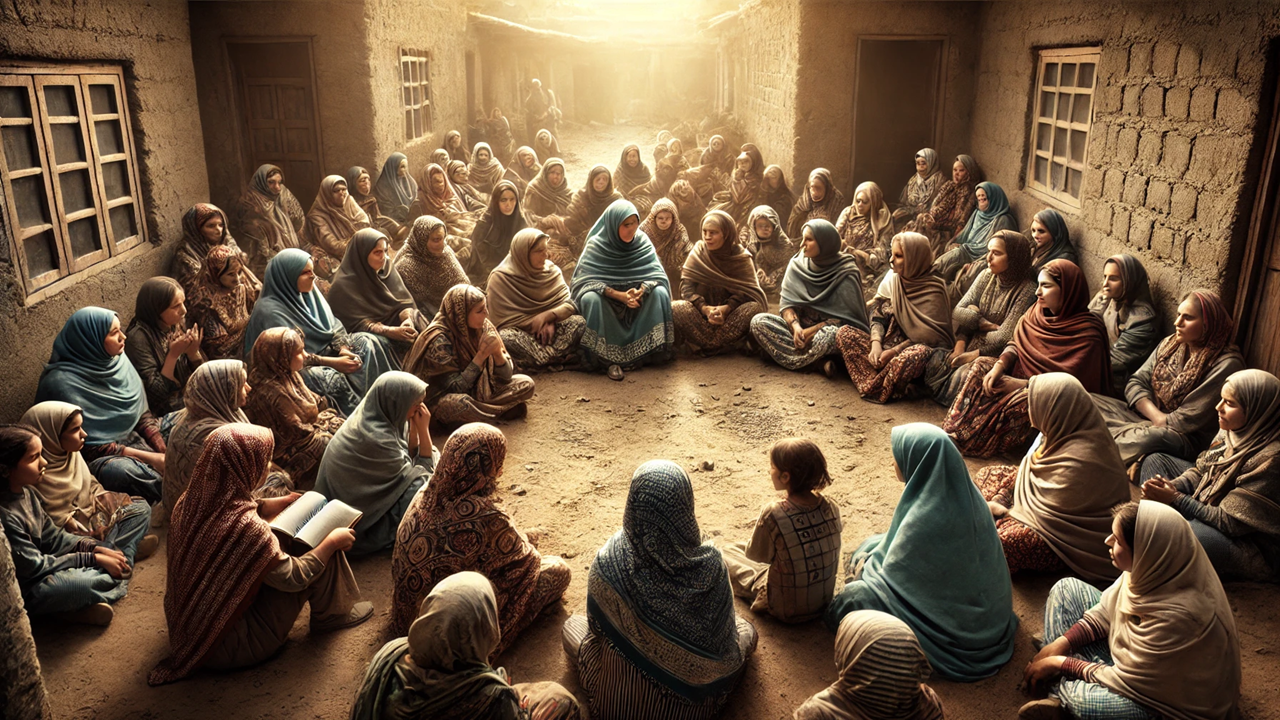Beyond the Shadows: Unleashing Women's Power to Break the Cycle of Conflict and Inequality
The World Bank Group’s new report, A Development Approach to Advancing Gender Engagement and Addressing Gender Inequalities in Fragile, Conflict, and Violent Situations, highlights the urgent need to address gender disparities in fragile and conflict-affected settings. The report outlines a strategy focused on three key areas: tackling gender disparities, addressing gender-based violence (GBV), and empowering women in forced displacement contexts. This approach aims to reduce gender inequalities, mitigate conflict drivers, and promote resilience in communities worldwide.

In fragile and conflict-ridden parts of the world, gender inequality isn’t just a social issue—it’s a driver of violence, instability, and suffering. A new report by the World Bank Group, A Development Approach to Advancing Gender Engagement and Addressing Gender Inequalities in Fragile, Conflict, and Violent Situations, sheds light on the dire consequences of neglecting gender disparities in these volatile environments and presents a roadmap to address them.
The Gender Inequality Trap
Fragility, conflict, and violence (FCV) contexts have long been recognized as breeding grounds for inequality. However, as the World Bank’s report highlights, gender disparities in these settings are particularly pronounced. Women and girls, often disproportionately affected by violence and displacement, face monumental challenges in accessing education, healthcare, and economic opportunities. These barriers not only entrench poverty but also perpetuate cycles of violence and instability.
In countries torn apart by conflict, women are often sidelined, and their potential contributions to peace and stability are ignored. Yet, the report underscores that women are not just victims—they can be powerful agents of change. When given the chance, women’s participation in peace processes and community rebuilding efforts has proven to be a critical factor in achieving lasting peace.
Three Pillars of Change
The World Bank Group’s strategy for addressing gender inequalities in FCV settings is built on three key pillars. First, it calls for a focused effort to tackle gender disparities by improving access to essential services and economic opportunities. This includes ensuring that girls receive an education and women have the tools to participate fully in the economy. Programs aimed at protecting women’s livelihoods and fostering their leadership in male-dominated sectors are essential components of this approach.
Second, the report emphasizes the urgent need to address gender-based violence (GBV). In many FCV contexts, GBV is rampant, with intimate partner violence (IPV), forced marriage, and human trafficking devastating countless lives. The World Bank’s approach includes not only supporting survivors but also tackling the root causes of GBV through community engagement and legal reforms.
Finally, the report highlights the importance of empowering women in forced displacement contexts. Displacement exacerbates existing inequalities, leaving women and girls particularly vulnerable. By creating economic opportunities and ensuring their social inclusion, the World Bank aims to give displaced women the means to rebuild their lives and contribute to the resilience of their communities.
The Path Forward
The World Bank’s report is clear: addressing gender disparities in FCV settings is not just a moral imperative; it’s a strategic one. By focusing on gender equality, the World Bank Group hopes to mitigate the drivers of conflict and build more resilient communities. But the path forward is not easy. It requires sustained commitment, collaboration with local and international partners, and a willingness to adapt strategies to the unique challenges of each FCV context.
As the world grapples with ongoing and emerging conflicts, the insights from this report are more relevant than ever. Gender inequality is not a side issue—it’s central to the broader challenges of fragility and violence. By breaking the chains of inequality, we can unlock the potential for peace, stability, and prosperity in even the most challenging environments.
The World Bank Group’s approach offers a roadmap for making this vision a reality. Now, it’s up to the global community to take action.
This article, inspired by the World Bank Group's report A Development Approach to Advancing Gender Engagement and Addressing Gender Inequalities in Fragile, Conflict, and Violent Situations, provides a comprehensive yet accessible overview of the critical need to address gender disparities in conflict settings. The strategy outlined in the report offers hope for mitigating the drivers of fragility and promoting lasting peace. The article is designed to be reader-friendly, ensuring that the message resonates with a broad audience, from policymakers to concerned citizens.
- FIRST PUBLISHED IN:
- Devdiscourse
ALSO READ
State of Emergency as Violence Escalates in Trinidad & Tobago
Dire Report Exposes Violence Against Women in Balochistan
Aurat Foundation Urges Urgent Reforms Amid Rising Violence Against Women in Balochistan
Escalating Violence: Police Targeted in Northwest Pakistan
Curfew Imposed After Jalgaon Violence










